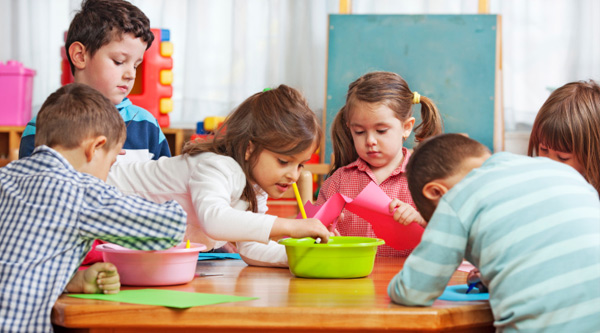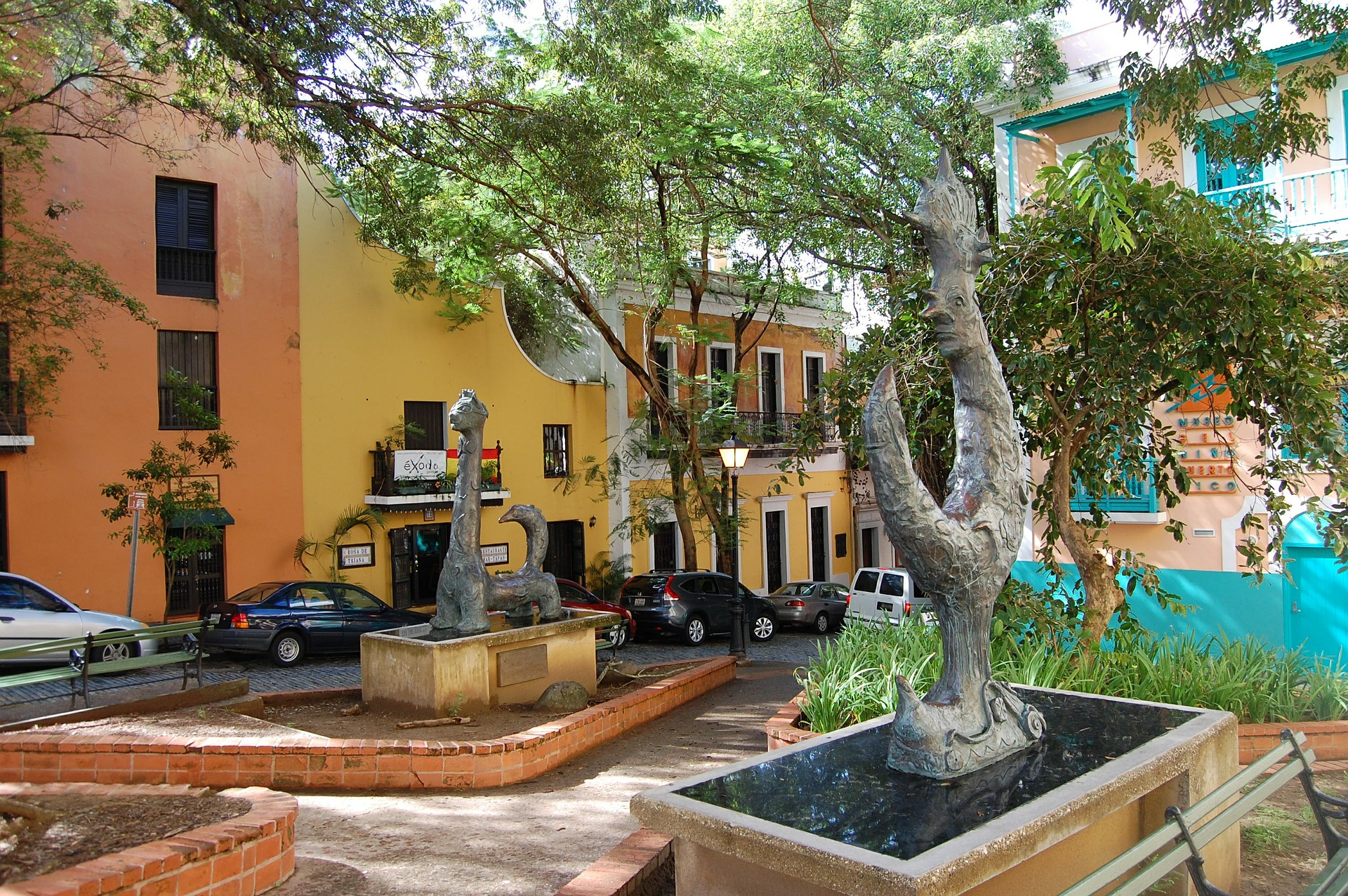I had a Ninja Turtle problem. I was teaching a weekly after-school art class to a group of fifteen kindergarteners, and one of my students seemed interested only in drawing pictures of Ninja Turtles, no matter what materials or prompts I gave. When left to his own devices, he drew remarkably complex depictions of the characters, but when I urged him to recall the guidelines of our activity, he could barely muster holding a pencil upright. This led to a weekly tug-of-war between us: when allowed to do what he wanted, he drew with passion, pride, and care, but with little connection to my teaching. When he followed my activity guidelines, he made artwork that did the minimal to meet these guidelines, but had almost no connection to his learning. I did my best to respect and validate my student’s interests, while encouraging him to try meeting the challenges of my expectations, but eventually I sided with him. For the time being, the teenage turtles (and my own commitment to fostering my students’ sense of creative agency) had defeated my strong belief in teaching technique and style as intellectual pursuits that often require some level of discipline.
The problem I faced was not that I wanted to dissuade my student from drawing Ninja Turtles, or that I wanted to convince him to blindly heed my instructions, but that—following my idea of what makes a successful and supportive teacher—I wanted to be able to guide him to do his own work and, at the same time, to be open to trying new approaches.
As the class progressed though, I noticed that my students’ response to the artwork we created was often surprisingly lackluster. When introducing a new activity, I gave what I thought were simple, but open-ended, instructions, like, “Create a drawing only using lines,” or “Cut ten shapes you have never seen before.” This was my way of shaping the learning that would occur without making or limiting decisions for my students, but my students often seemed confused or uninspired. When several students finished early or lost interest, disruptive behavior began to distract from my teaching and other students’ learning. I pushed ahead and tried to make some adjustments, but I was beginning to recognize my need for a larger overhaul.
As a teacher and an artist, I see the process of learning, like any creative process, as multi-faceted. I aim to encourage students to learn in many different ways as they engage with both new and familiar materials. It is especially important to me that I am able to strike a balance in my teaching: between guiding students to discover the joy and power that can be found in processes of learning and creative expression, and challenging students to embrace the rigor required to build specific skills and explore ideas deeply. This Ninja Turtle problem was emblematic of some of the ways the balance had slipped askew.
The class ended, the summer passed, and I found myself anticipating several new teaching assignments, still feeling dissatisfied and wondering where I had gone wrong. I sought clues in scraps of writing I’d saved, scrawled on backs and corners of pages from class: remember (not) to do this next time! I took another look at the formal self-evaluation I had submitted to my supervisor; it was useful, but also diplomatic, I thought. I re-read my lesson plans to remind myself of other successes and challenges from the class. I tried to recall, what happened?
Eventually, the notes I collected, along with the written evaluation and combed-through lesson plans, presented a pretty clear picture to me: despite my best intentions, I was not giving my students enough opportunities to make their own choices. The instructions I had thought were open-ended and encouraging of independent decision-making often ended up being prohibitive when students had no concrete examples of what they might do. There was recurring conflict between students’ interests and my instructions. Why, I wondered, was I repeatedly telling students not to do what they wanted to do? I had become so focused on challenging my students (based on my own creative values) that my expectations had become both too vague and too rigid. It was time to try something very different, and the notion of choice in learning had emerged as my key directive.
As I began my teaching in the fall of 2015, I planned to implement a new and exciting component in my classroom: the choice station. After I welcomed students and discussed our day’s lesson, I invited the students to split their time between an activity station with long-term projects designed to practice and combine specific skills, and a choice station with a surprise assortment of materials to explore freely as they saw fit. At first, I saw the choice station as an opportunity to scaffold skills—if I knew we would begin working with watercolor paint at the activity station next week, I could set paint out at the choice station this week—however, I quickly realized the importance of keeping my teaching goals separate from my students’ self-driven creative goals. While I focused on engaging and assisting a small group of students as we worked on a variety of different projects at the activity station, I saw others at the choice station eagerly making decisions about what to do with the day’s array of materials. Every student had something to be proud of and take home at the end of class, and behavior problems diminished as students always had something to keep them occupied. The choice station was a smash hit.
By the end of the school year I had implemented the choice station in five different kindergarten art classes, and I felt proud of the successful changes I had made in my teaching, but I wanted to understand more about what exactly happens when students are given choice and independence in their own learning.
I turned to my students themselves for insight and feedback, conducting several short interviews that I hoped might be enlightening. I began with a simple question, “What happens when you go to the choice station?” As my students considered their replies, I began to see that different students interpreted the purpose behind this component of the classroom differently. One girl told me, “You get materials and then you could make something with them and then you could decide what it is or it could be something that you made but you have no idea what it is. Maybe you could add onto it or you could just not know what it is.” Content with not knowing, she seemed to connect with the open-ended, process-focused opportunity the choice station allowed. Her explanation suggests a low-stakes perspective on art for art’s sake—there doesn’t need to be a reason to create.
Another student told me poetically, “It’s basically your choice what to do. It’s your imagination. It’s your nature. It’s your habitat.” I find it difficult not to admire the clarity of this statement: choice is imagination is nature is home. Many students feel more at ease in a situation where they are free to manipulate the outcome of their learning; for young children, imaginative play provides a natural habitat—choice becomes a home, nurturing and comfortable. Still another student let me know that when there are more varied and new materials, “It helps my brain think of new ideas of what I should make.” It was good to know that this feeling of ease she described could be at least partially sparked by intentional planning on my part.
Seeking more specific information and examples, I began to ask students about projects they might remember making at the choice station, and again found that an important part of their work and play there involved defining not only what to make, but also why. Many of the projects my students described had an intrinsic purpose, usually extending toward others they cared about, via making gifts, working together, or extending play outside of the classroom. As we talked about times she had worked on cards for a teacher or presents for a friend’s birthday, a student told me, “It’s just so that my family knows that I love them and my friends know that I love them and to let them know that they’re special to me.” What a profound reminder as an adult that for young children, one of the most compelling reasons to make art is that art helps communicate love.
Many of the students I spoke to, mostly unbeknownst to me, regularly worked together at the choice station. In these situations, they developed different collaborative strategies to direct leadership and planning.
One student explained a frequent partnership, “She usually chooses what we make, but then I choose how to do it and what we should use, so it’s kind of even and we get to work together.” Another told me about directing a large group of peers. “I said, ‘Let’s make houses’ and they made like twenty of them.” Without any instruction, my five-year-old students had been negotiating roles within groups and compromising to share ideas. Some also described creating props for anticipated future play. “We’re going to a playdate so we wanted to make something for her doll.” “We used the oval-shaped paper to make pizza… and I made a pizza sign… [then at afterschool] we made a pizza sale… And the other day when we used the pipe cleaners the first time, we made the flowers and then we sold the flowers.” I was delighted and fascinated to learn that my students were imagining and then realizing such intricate and interactive activities, created from what I saw as a motley supply of materials.
One of the most significant lessons I took away from my experience is the importance of stepping back. After working carefully to set up a classroom and a curriculum that will support and excite my students, it can be just as necessary to allow the learning to happen without me sometimes. After hearing from my students themselves about what and why they created, I was amazed by the breadth of learning that resulted from my change in approach.
This year I find I have a clean-up problem. The ends of my classes can be too hectic and messy and noisy. I am eager to come up with some possible solutions and will again turn to my scraps of notes and typed-up evaluations to get ideas for what they might be. I am pleased to report, however, that no teenaged reptiles are currently challenging my teaching style.
Philip Berezney is a multidisciplinary teaching artist with interests spanning visual and performing arts. His arts education work has brought him from co-developing expressive-arts programming aimed at acknowledging trauma in post-Katrina New Orleans public schools, to introducing arts curriculum in a science-focused summer school for multilingual families of migrant workers in coastal Maine, to teaching in schools all over Manhattan and Brooklyn. Student input for this article was collected while developing the choice/activity station classroom model during programming with Wingspan Arts. Philip has also taught through 92nd St Y, Grand Street Settlement, Brooklyn Arts Exchange, Harlem Village Academies, and the Blueberry Harvest School/Mano en Mano.


